 Ударна група на руския военноморски флот днес осъществи взаимодействие със стратегически ракетоносци и бойна авиация от Северния флот в рамките втория ден от ученията на руските военноморски сили в Бискайския залив, съобщиха информационните агенции.
Ударна група на руския военноморски флот днес осъществи взаимодействие със стратегически ракетоносци и бойна авиация от Северния флот в рамките втория ден от ученията на руските военноморски сили в Бискайския залив, съобщиха информационните агенции.
Учението, което се провежда недалеч от бреговете на Франция и Испания, се командва от борда на самолетоносача „Адмирал на флота на Съветския съюз Кузнецов". Освен него в ударната група са включени още пет кораба. На 5 декември 2007 г. тя предприе далечно плаване към Североизточния Атлантик и Средиземно море.
В днешните маневри взеха участие кораби КУГ, самолети Ту-160, Ту-142 и Су-33.
От утре, 23 януари в учението ще се включат и самолети Ту-160, Ту-95, Ту 22, Ил-78 и А-50.
На среща в Кремъл руският министър на отбраната Анатолий Сердюков е докладвал на президента Владимир Путин, че така Русия възобновява присъствието си в световния океан.
Предвижда се руският военен флот да измине 12 хиляди мили по време на плаването.
Предишният подобен поход в Атлантика беше през 2004 г.
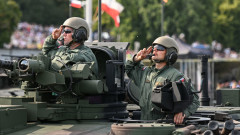

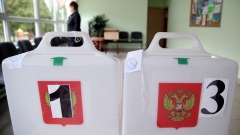



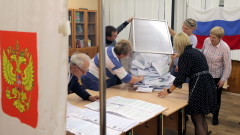

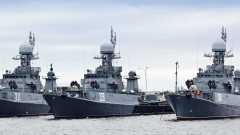


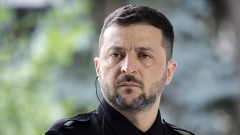




























 USD
USD CHF
CHF EUR
EUR GBP
GBP





























minimi
на 22.01.2008 в 23:07:23 #33minimi
на 22.01.2008 в 23:05:08 #32minimi
на 22.01.2008 в 22:59:33 #31T
minimi
на 22.01.2008 в 22:57:51 #30In late November, the Chinese struck in the west, along the Chongchon River, and completely overran several South Korean divisions and successfully landed a heavy blow to the flank of the remaining UN forces. The ensuing defeat of the U.S. Eighth Army resulted in the longest retreat of any American military unit in history.[37] In the east, at the Battle of Chosin Reservoir, a 30,000 man unit from the U.S. 7th Infantry Division and U.S. Marine Corps was also unprepared for the Chinese tactics and was soon surrounded, though they eventually managed to escape the encirclement, albeit with over 15,000 casualties, after inflicting heavy casualties on six Chinese divisions.[38] While the Chinese soldiers initially lacked heavy fire support and light infantry weapons, their tactics quickly adapted to this disadvantage, as explained by Bevin Alexander in his book How Wars Are Won: "The usual method was to infiltrate small units, from a platoon of fifty men to a company of 200, split into separate detachments. While one team cut off the escape route of the Americans, the others struck both the front and the flanks in concerted assaults. The attacks continued on all sides until the defenders were destroyed or forced to withdraw. The Chinese then crept forward to the open flank of the next platoon position, and repeated the tactics." Roy Appleman further clarified the initial Chinese tactics as: "In the First Phase Offensive, highly skilled enemy light infantry troops had carried out the Chinese attacks, generally unaided by any weapons larger than mortars. Their attacks had demonstrated that the Chinese were well-trained disciplined fire fighters, and particularly adept at night fighting. They were masters of the art of camouflage. Their patrols were remarkably successful in locating the positions of the UN forces. They planned their attacks to get in the rear of these forces, cut them off from their escape and supply roads, and then send in frontal and flanking attacks to precipitate the battle. They also employed a tactic which they termed Hachi Shiki, which was a V-formation into which they allowed enemy forces to move; the sides of the V then closed around their enemy while another force moved below the mouth of the V to engage any forces attempting to relieve the trapped unit. Such were the tactics the Chinese used with great success at Onjong, Unsan, and Ch'osan but with only partial success at Pakch'on and the Ch'ongch'on bridgehead."[20] The U.S. forces in northeast Korea, who had rushed forward with great speed only a few months earlier, were forced to race southwards with even greater speed and form a defensive perimeter around the port city of Hungnam, where a major evacuation was carried out in late December 1950. Facing complete defeat and surrender, 193 shiploads of American men and material were evacuated from Hungnam Harbor, and about 105,000 soldiers, 98,000 civilians, 17,500 vehicles, and 350,000 tons of supplies were shipped to Pusan in orderly fashion. As they left, the American forces blew up large portions of the city to deny its use to the communists, depriving many Korean civilians of shelter during the winter.[34][39]
minimi
на 22.01.2008 в 22:55:57 #29BAI IVAN
на 22.01.2008 в 22:54:26 #28Herman
на 22.01.2008 в 22:47:46 #27ulubatli hasan
на 22.01.2008 в 22:46:49 #26minimi
на 22.01.2008 в 22:38:00 #25Herman
на 22.01.2008 в 22:33:38 #24AtillA
на 22.01.2008 в 22:14:45 #23minimi
на 22.01.2008 в 22:07:05 #22СУ37
на 22.01.2008 в 22:00:46 #21sushiclub
на 22.01.2008 в 21:56:08 #20AtillA
на 22.01.2008 в 21:51:18 #19Striker
на 22.01.2008 в 21:37:57 #18Kintaro
BAI IVAN
на 22.01.2008 в 21:19:11 #17it_pro
на 22.01.2008 в 20:54:34 #16Black out
на 22.01.2008 в 20:41:21 #15minimi
на 22.01.2008 в 20:35:21 #14